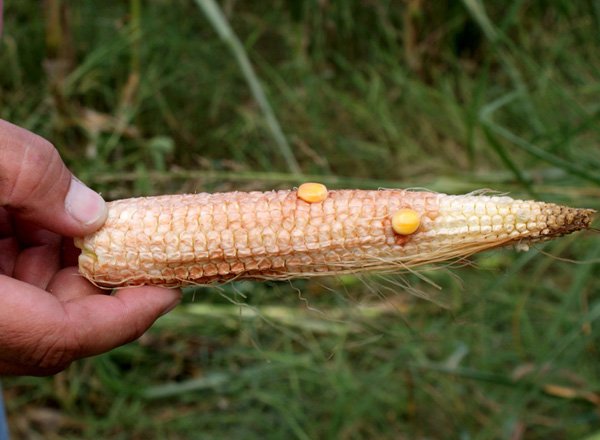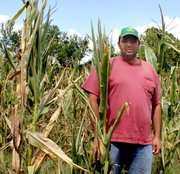WESTSIDE — Even though the National Agricultural Statistics Service is forecasting the Arkansas corn crop to be the second largest on record, corn in the extreme north and western part of the state has not fared as well.
Because of record setting heat and drought conditions, area farmers, as well as truckfarmers, have experienced diminished crops, some almost nonexistent, as the accompanying photos demonstrate.
Brad Amos is shown in a field of drought-stunted corn being harvested for silage because of immature and nonexistent ears. The other photo shows the extent of damage that was evident in several fields near Gravette.
According to NASS, 70.1 million bushels of corn are predicted for the state, second only to the 99.7 bushels harvested in 2007. The crop in northeastern Arkansas where flooding occurred was also diminished, the NASS report indicated.
The 2001 rice harvest is also predicted to be the second highest on record.
News, Pages 8 on 09/28/2011


